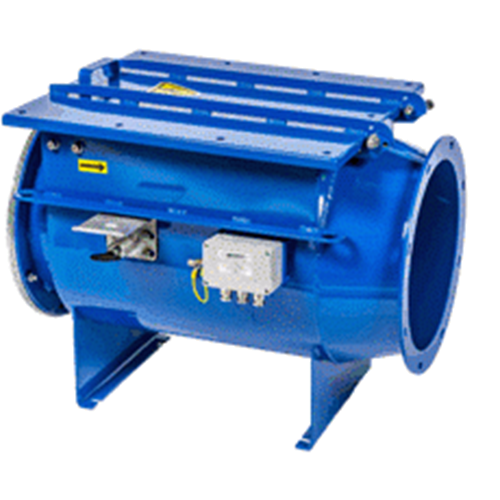
Cost Effective and User-Friendly Passive Explosion Protection for the Wood Industry
In addition to Lumber Processing and Wood Products industries, many manufacturing processes are at risk of dust explosions which may occur when fine combustible particulates, dispersed in air, are exposed to an ignition source within a contained environment.
These types of contained environments are commonly present throughout industry – in addition to dust collectors, they may include piping and ducting, process vessels, and numerous other types of special process machinery. The ignition source may originate from various commonly found conditions, including hot materials or surfaces, flames, welding, friction or uncontrolled electrostatic discharges. Such ignition sources should always be minimized or eliminated through a combination of engineering and safety controls, effective management and operator training and awareness. However, even with these measures in place, the explosion risk cannot be ignored, especially in abnormal or fault conditions, and therefore and therefore techniques to mitigate the potentially catastrophic effects of such an event must be employed.
A specialized manufacturer of Wood Products based in the North Eastern United States consulted IEP Technologies when installing a new process line that needed protection against the potentially dangerous and costly effects of industrial explosions. As part of the plant expansion, a new Dust Collector was to be installed in an outside location.
Quickly, it became clear that further protection measures would be needed to reduce the risk of an explosion event from propagating upstream from the dust collector, endangering connected equipment and personnel working close to the line.

Both passive and active isolation techniques were evaluated
In order to provide a reliable explosion barrier at the inlet between the Dust Collector and the rest of the process line, both passive and active isolation techniques were evaluated. It was determined that the ISOFLAP™-M isolation valve was the optimal solution for this application. Other isolation valves were considered, but dismissed, as they did not meet the minimum requirements.
The Wood Products company also incorporated a monitoring interface unit with the valve, to easily integrate with the plant control system so that in the event of an explosion occurring, the dust collector is signaled to immediately shut down. The fact that the unit incorporates this monitoring function within the scope of its approval negates the requirement for the user to conduct a documented risk assessment and inspection protocol and frequency that is acceptable to the "authority having jurisdiction", which in practice can be difficult and costly for the user to provide.
The robust, reliable and user-friendly features of the ISOFLAP™-M Explosion Isolation Valve, coupled with the extensive testing and approvals for the product across a wide range of potential applications illustrate IEP’s continued investment and long-term capability as a Trusted Industrial Explosion Protection Partner.


